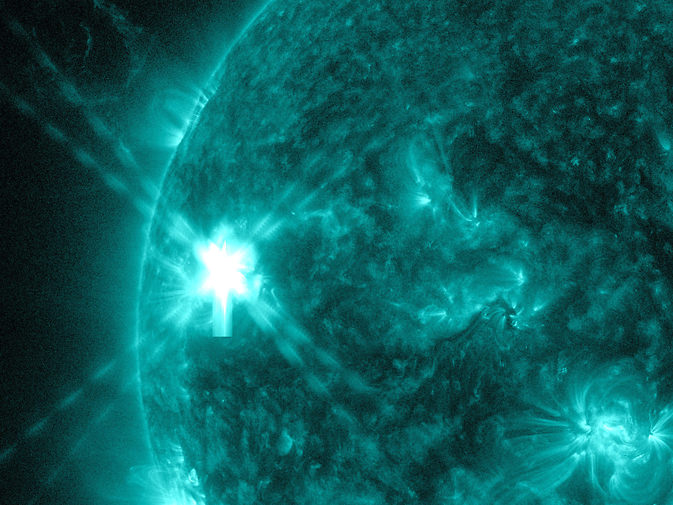Astronomers See Flashes on the Sun That Could be a Sign of an Upcoming Flare
By Nancy Atkinson
Using data from the Solar Dynamics Observatory, scientists have discovered new clues that could help predict when and where the next solar flare might blast from the Sun.
Researchers were able to identify small flashes in the upper layers of the corona – the Sun’s atmosphere – found above regions that would later flare in energetic bursts of light and particles released from the Sun. The scientists compared the flashes to small sparklers before the big fireworks.
“We can get some very different information in the corona than we get from the photosphere, or ‘surface’ of the Sun,” said KD Leka, lead author on the new study from Nagoya University in Japan, in a NASA press release. “Our results may give us a new marker to distinguish which active regions are likely to flare soon and which will stay quiet over an upcoming period of time.”
Since it launched in 2010, the Solar Dynamics Observatory has helped scientists understand better what causes solar flares. One of the main goals of the mission was to be able to create forecasts for predicting activity on the Sun.
Scientists have previously studied how changes in the Sun’s magnetic field can cause flares, helping them to predict when some flares would occure. Additionally, other teams have modeled how activity in lower layers of the Sun’s atmosphere – such as the photosphere and chromosphere – can indicate impending flare activity in active regions, which are often marked by groups of sunspots. The new findings, published in The Astrophysical Journal, add to that picture.

Credits: NASA/SDO/AIA/Dissauer et al. 2022
“With this research, we are really starting to dig deeper,” said Karin Dissauer from NorthWest Research Associates, or NWRA, who was instrumental in putting together an image database of the Sun’s active regions captured by SDO for the past eight years. “Down the road, combining all this information from the surface up through the corona should allow forecasters to make better predictions about when and where solar flares will happen.”
The new database makes it easier for scientists to use data from SDO’s Atmospheric Imaging Assembly (AIA) large statistical studies.
“It’s the first time a database like this is readily available for the scientific community, and it will be very useful for studying many topics, not just flare-ready active regions,” Dissauer said.
The NWRA team studied a large sample of active regions from the database, and their analysis revealed there are frequently small, intense brightness changes in the corona before the solar flares. These and other new insights will give researchers a better understanding of the physics taking place in these magnetically active regions, with the goal of developing new tools to predict solar flares.
The team said their methods could eventually help improve predictions of flares and space weather storms. Space weather can affect Earth in many ways: producing auroras, endangering astronauts, disrupting radio communications, and even causing large electrical blackouts.
The post Astronomers See Flashes on the Sun That Could be a Sign of an Upcoming Flare appeared first on Universe Today.

January 30, 2023 at 01:05AM
via Universe Today read more...

Post a Comment